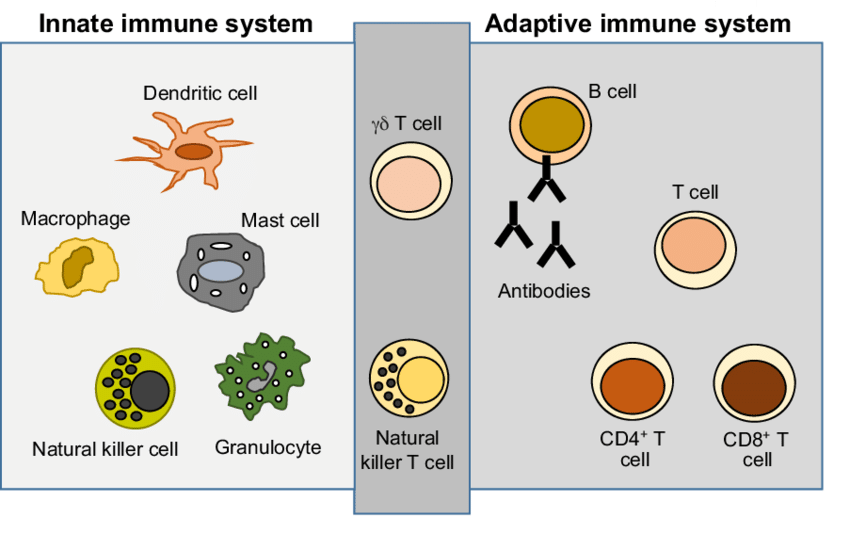
Adaptive immune system - B cells & T cells (Pathology) UNFINISHED
After completing this session you will be able to: Describe the characteristics, development, and activation of the cells that produce antibodies Describe the molecular structure of antibodies Describe how antibodies work, how they bind antigens, and how they help clear pathogens or toxins using their different isotypes Understand the role of the thymus and the bone marrow as primary lymphoid organs where T cells and B cells develop Describe the role of antigen presenting cells and the role of antigen processing and presentation by the Major Histocompatibility Complex class I and II
-
State some information about the Lymphoid progenitor cell:

-Gives rise to Lymphocytes-20-30% peripheral blood white cells-6-10 microns in diameter with large nucleus,small halo of cytoplasm-Upon stimulation by Ag become EFFECTORCELLS or MEMORY CELLS-2 main types: T cells and B cells(T-lymphocytes and B-lymphocytes)-Early developmental stage, cells pass toThymus – become T cells or stay in Bonemarrow – become B cells
-
List the 7 Cardinal features of the adaptive immune response with the corresponding functional significance
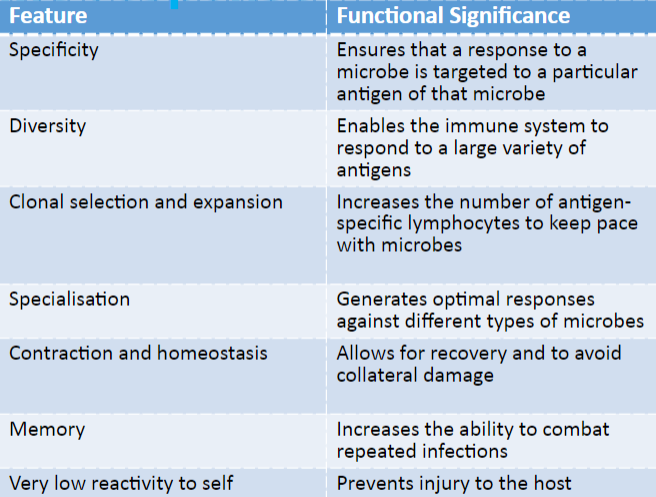
-
Picture outlining b cell formation:
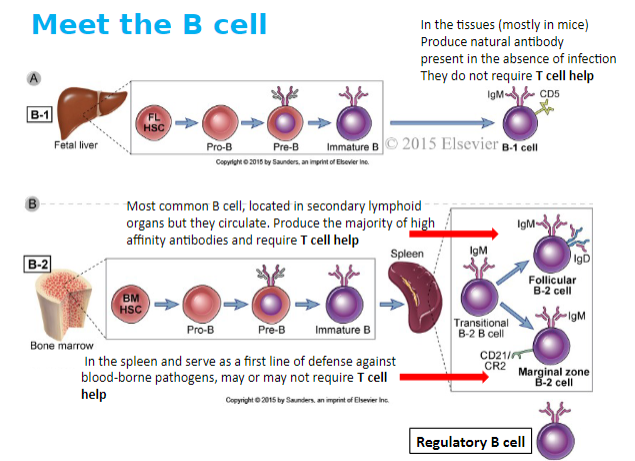
-
A more detailed picture outlining b cell formation:

-
Picture outlining humoral immunity:
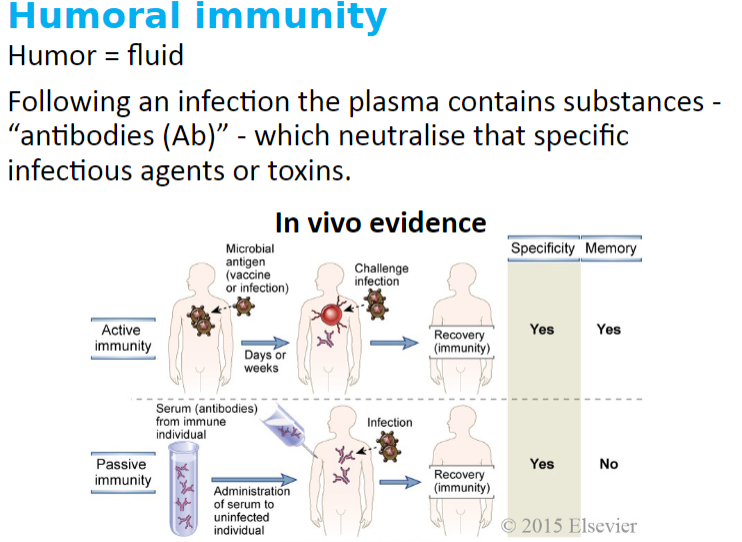
-
Picture outlining the phases of the humoral immune response:
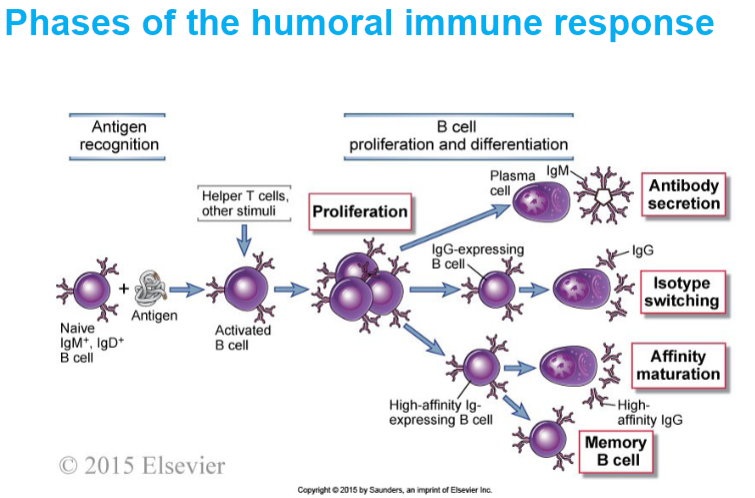
-
What is an antigen?
1)Rather superficially, an antigen is defined as "anything that can be bound by an antibody
2)Now antigens are also considered any substance that caninduce an adaptive/acquired immune response.
3)Antigens can be short peptides, proteins, sugars, lipidsetc
-
What is an antibody?
-Antibodies are proteins produced by adaptive immune cells that bind specifically to relatively small parts of foreign molecules, known as antigenic determinants or epitopes.
-
State some information about the immunoglobulin/antibody:
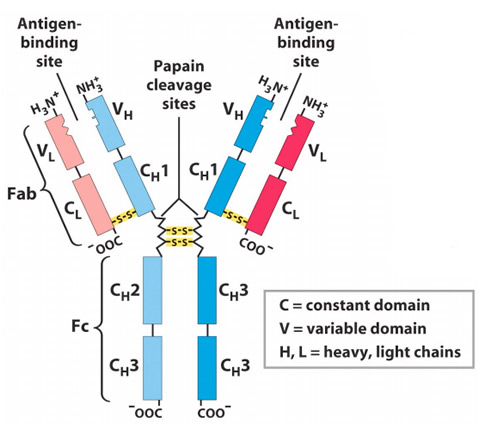
• Immunoglobulin glycoprotein
• Y-shaped
• Tetrameric
• - 2 identical heavy chains
• - 2 identical light chains
• Held together by
• non-covalent interactions
• and by –S-S- cross-links
• between cysteine residues
-
What is the immunoglobulin variable region, and where is it located?
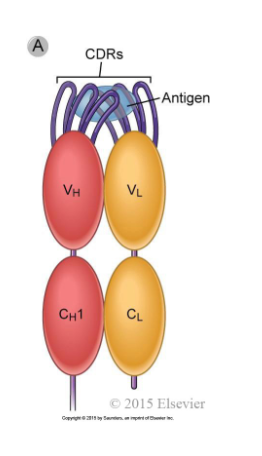
• Within the variable region, sequences are concentrated into certain segments called HYPERVARIABLE REGIONS, 3 in the VH and 3 in the VL
• Most variability lies in the HV3 domain
-
How does an antibody bind to an antigen?

Using non-covalent interactions• Electrostatic, hydrophobic, van der Waals forces, hydrogen bonds• Depends on the antibody binding site being exactly complementary, sterically (in space) andchemically, with a site on the surface of the antigen• The region on the antigen where the specific antibody binds is called an epitope or antigenic determinant• Antigens can bind in pockets, grooves, on extended surfaces or to protruding surfaces on the BCR (B-cell receptor) CDRs (Complementarity Determining Regions)
-
Is the antigen binding site the same in both Membrane and secreted forms of the antibody?

Yes
-
What are the different Immunoglobulin isotypes?
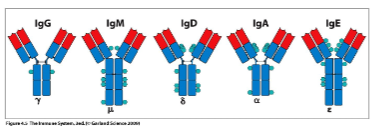
-IgG
-IgA
-IgM,-IgE
-IgD
-
IgG has the most subclasses in humans; What are they?
IgG1, 2, 3 and 4
-
Picture summary of the Antibody isotypes
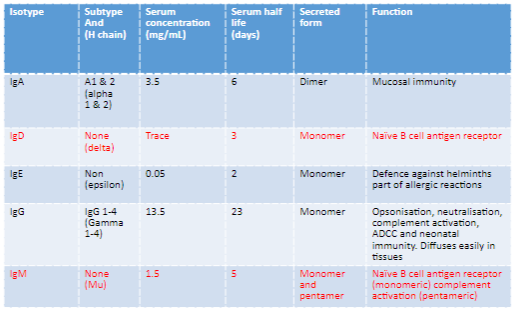
-
Where do T cells mature?
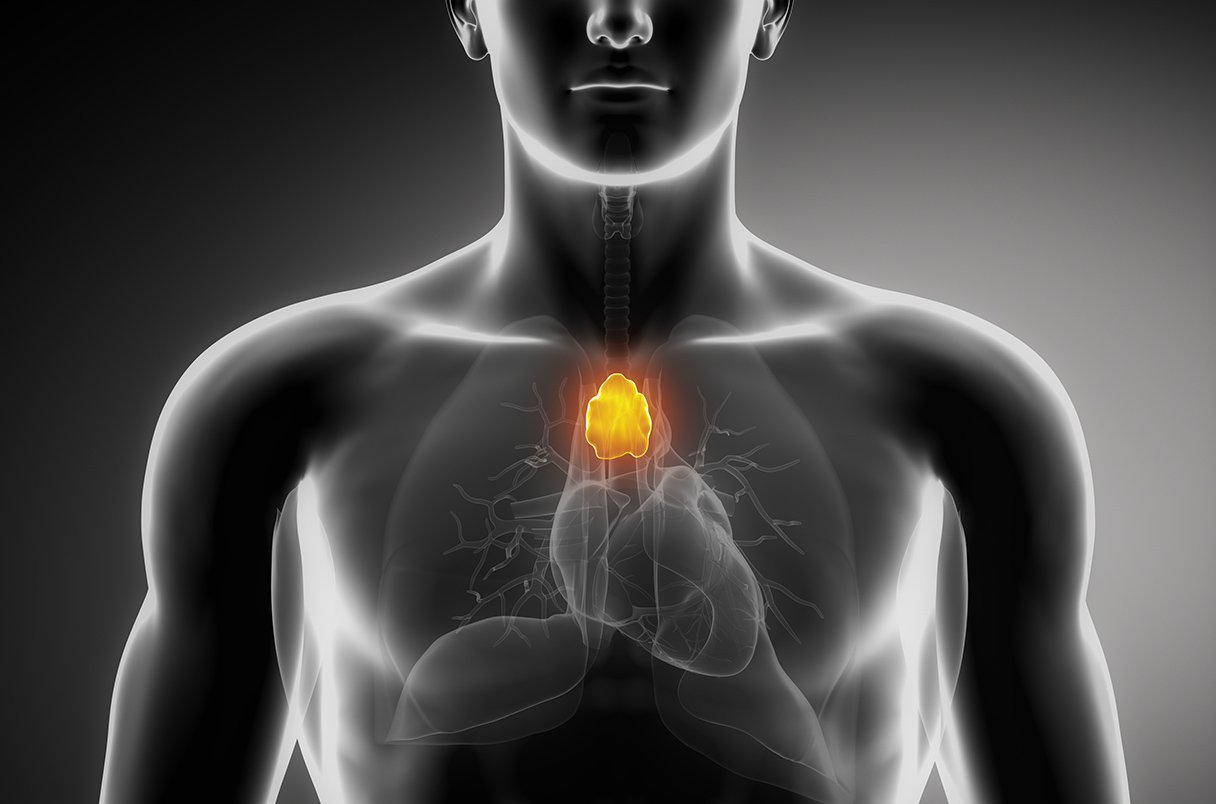
In the thymus
-
Where do immature T cells develop? Where do they them migrate? What happens during this process?
-Develop in the bone marrow
-Then migrate to the thymus to encounter self-antigen.-During this process many T cells die by apoptosisleaving just those that can generate a usefulresponse to infection
-
When does the thymus enlarge?
Enlarged during childhood
-
When does the thymus atrophy?
During puberty
-
Ab T cells Helper T cells: What surface proteins do they express? What is the cells function? Do they have subgroups?
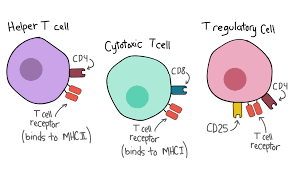
Express CD4 and CD3)
• activated to secrete cytokines to helpimmune responses or to becomememory cells
• 2 main sub-groups: TH1 & TH2 ( also Th17
-
Cytotoxic T cells: What surface proteins do they express? What is the cells function?
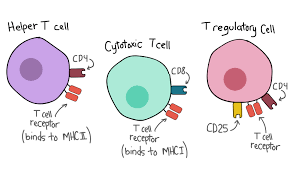
(express CD8 and CD3)
• activated to kill infected targets or to become memory cells• usually cytotoxic in nature and kill via the release of the toxiccontents of granules or through induction of apoptosis
-
Regulatory T cells: What surface proteins do they express? What is the cells function? Do they have subgroups?
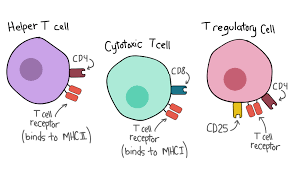
(mainly CD4+ (some CD8+)
•T cells able to affect immune responses by either suppressing them or activating them through direct cell contact or by the secretion of soluble factors (cytokines)• 2 main types: natural or inducible
-
The T cell receptor is a dimeric molecule; What doe the word 'dimeric' mean?
When a molecule composed of two subunits or monomers
-
The T cell receptor consists of what chains? Where each chain has a what?
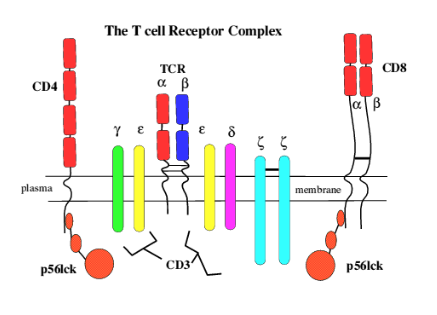
-ab or gd chains covalently linked by S-S
-Each chain has a variable and constant Ig like domain
-
The T cell receptor is associated with the signalling complex called what? Why is it important?
• CD3• CD3 is the identifier of the T cell
-
What does MHC stand for?
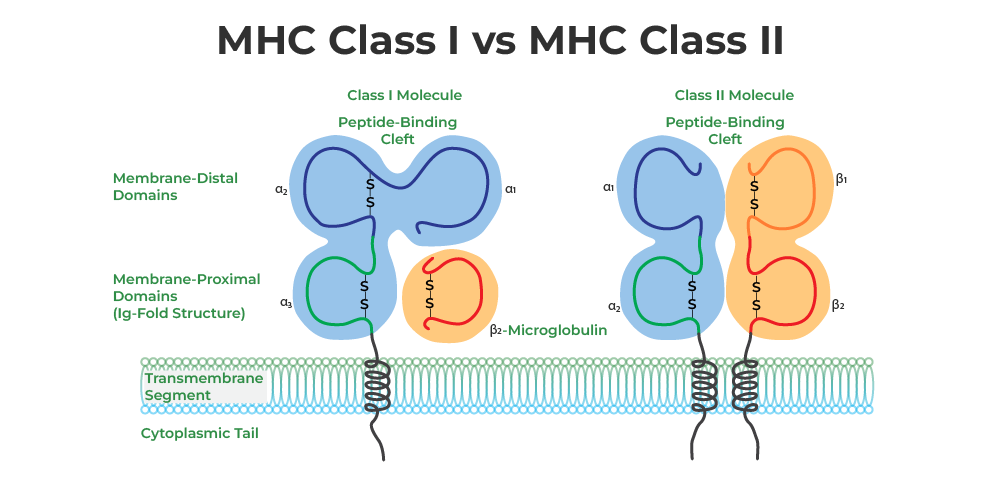
Major Histocompatibility Complex
-
State 4 pieces of information about the major histocompatibility complex:
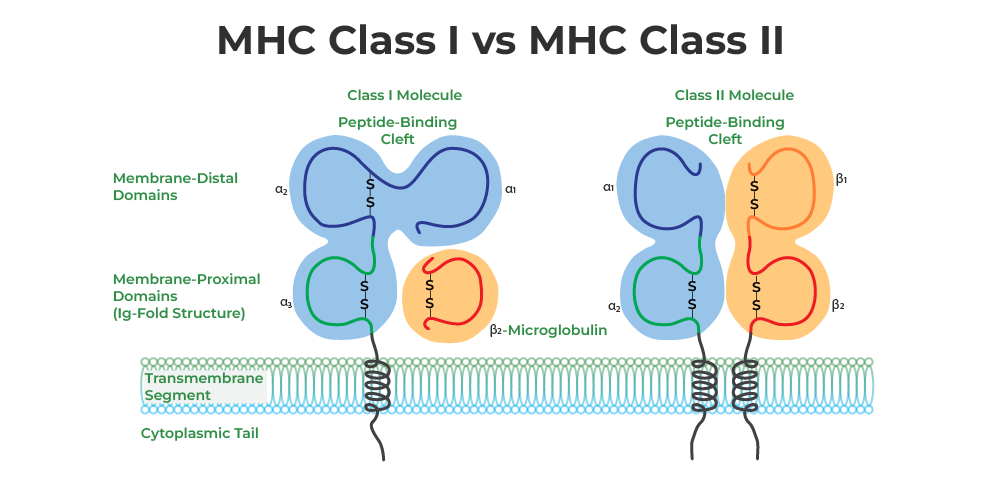
• Surface expressed molecule
• MHC encodes for the human leukocyte antigens (HLA)
• Two types: MHC Class I (HLA-A, B and C): expressed on all nucleatedcells
• MHC Class II (HLA-D): expressed on ‘professional’ Antigen Presentingcells
-
Picture demonstrating the peptide binding groove
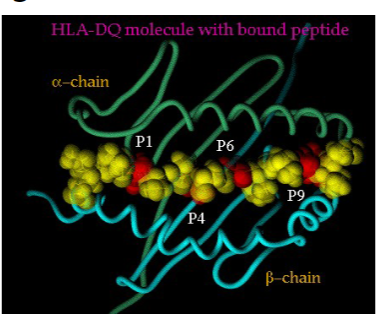
-
What does MHCII do in relation to the surface proteins of T cells?
MHCII on APC presents peptide to CD4+ T cells to qualify the immuneresponse: cytotoxicity or humoral
-
What does MHCII do in relation to the surface proteins of T cells?
MHCI on any nucleated cell presents peptide to CD8+ T cells and is asignal for a cytotoxic response (except cross-presentation in APC)
-
State the steps of antigen processing and presentation toCD4 cells (5):

1)Uptake of extracellular proteins into vesicular compartments of APC
2)Processing of internalized proteins in endosomal/lysosomal vesicles
3)Biosynthesis and transport of class II MHC molecules to endosomes
4)Association of processed peptides with class II MHC molecules in vesicles
5)Expression of peptide-MHC complexes on cell surface
-
State the steps of antigen processing and presentation toCD8 cells (5):

1)Production of proteins in the cytosol
2)Proteolytic degradation of proteins
3)Transport of peptides from cytosol to ER
4)Assembly of peptide-class I complexes in the ER
5)Surface expression of peptide-class I complexes
-
What are Dendritic Cells?
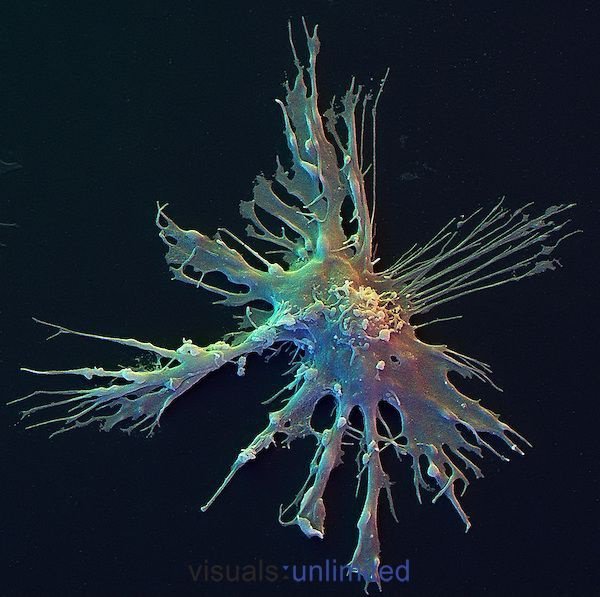
Irregularly-shaped cells found in most tissues. Usually myeloid derived but can be myeloid/lymphoid
-
When immature, dendritic cells....?
Capture antigens (foreign material) and migrate to LYMPHOID TISSUES, where they mature and effectively ‘present’ or ‘show’ antigen to T cells.
-
What are some subtypes of dendritic cells? (4)
-Langerhans cells (skin),
-Interdigitating
-Plasmacytoid
-'Follicular DCs' (actually fibroblasts)
-
Dendritic cells are the only Antigen-Presenting Cells (APCs) that can present to what?
Naive T cells

